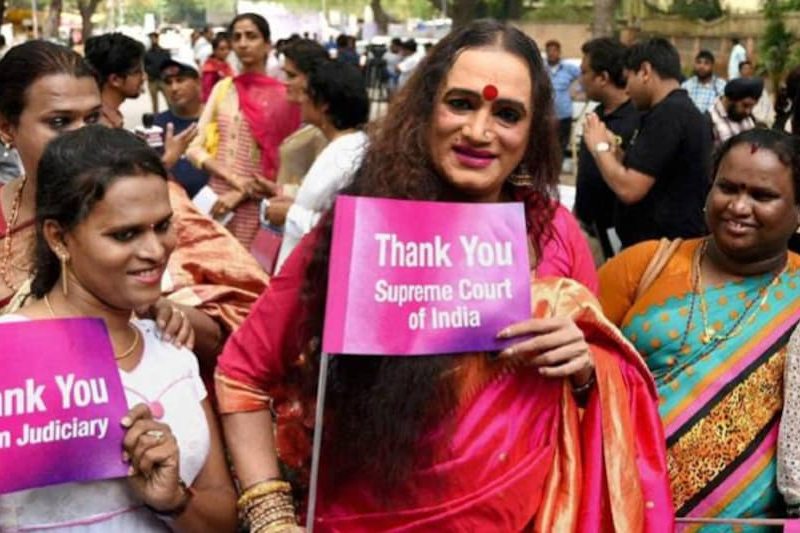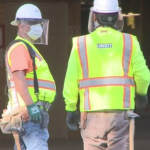
The NALSA vs. Union of India case, a point of interest lawful fight that unfurled some time recently the Supreme Court of India
The NALSA vs. Union of India case, a point of interest lawful fight that unfurled some time recently the Supreme Court of India, checked a noteworthy turning point within the acknowledgment and protection of transgender rights within the nation. Emerging from a Public Interest Litigation (PIL) recorded by the National Legal Services Authority (NALSA), the case shed light on the inescapable separation and marginalization confronted by transgender people, frequently alluded to as hijras, eunuchs, or third-gender people, over different aspects of life. From getting instruction and work to healthcare and legitimate acknowledgment of their sexual orientation, transgender people in India experienced systemic boundaries that hindered their full interest in society. Against this background, the NALSA appeal looked for legal mediation to address these squeezing issues and secure lawful acknowledgment and security for transgender rights.
Legitimate Issues and Challenges
At the heart of the NALSA vs. Union of India case were a few lawful issues that requested the Court’s consideration. These included the acknowledgment of the third gender, the proper self-identification of sexual orientation, security from separation, get to positive activity, and privilege to welfare plans and benefits. Each of these issues reflected the complex lawful and social challenges confronted by transgender people in attesting their personality and securing their rights in a society checked by deep-rooted bias and segregation. Tending to these multifaceted issues required the court to explore complicated legal terrain whereas adjusting the competing interface and guaranteeing the security of crucial rights for all people, independent of sexual orientation, personality or expression.
A Watershed Minute for Transgender Rights
On April 15, 2014, the Supreme Court of India conveyed a notable judgment within the NALSA vs. Union of India case, setting a modern point of reference for transgender rights and uniformity within the nation. In its ruling, the Court recognized transgender people as the third gender, asserting their protected rights under various arrangements of the Indian Structure, counting the Right to Equality, Prohibition of Discrimination, Equality of Opportunity in Public Employment, Freedom of Speech and Right to Life and Personal Liberty. This groundbreaking choice spoke to a critical flight from the double understanding of gender and certified the differing characters and encounters of transgender persons.
Transformative Effect on Transgender Rights
The judgment within the NALSA vs. Union of India case had far-reaching suggestions for transgender rights and uniformity in India. It certified the correction of transgender people to self-identify their sexual orientation, independent of surgical or restorative mediations, in this manner upholding their independence and nobility. Furthermore, the Court emphasized the significance of ensuring transgender people from segregation and guaranteeing their rise to cooperation in society. Additionally, the judgment allowed transgender people to get different welfare plans and benefits to address their socio-economic vulnerabilities. Besides, it recognized the transgender persons to alter their gender personality in official archives without experiencing sex reassignment surgery, asserting their right to attest their character and live really. By and large, the judgment laid down pivotal rules for the assurance and advancement of transgender rights, challenging winning demeanors and norms regarding sexual orientation, personality and sexuality in Indian society.
A New Period for Transgender Rights in India
Within the wake of the NALSA vs. Union of India case, an unused day break for transgender people over India, signaling a significant leap forward in their journey for acknowledgment, respect, and equality under the law. The Supreme Court’s point of interest judgment resounded all through the nation, reverberating with the trusts and yearnings of incalculable transgender people who had long endured the brunt of systemic segregation and marginalization.
The ruling in this case spoke to a lawful triumph, but a significant confirmation of the characteristic rights and humankind of transgender individuals. By recognizing them as the third gender and confirming their sacred privilege to correspondence, non-discrimination, and respect, the Court smashed long standing obstructions and challenged dug-in partialities that had consigned transgender people to the edges of society for too long.
Besides, the judgment laid down a strong system for the protection and advancement of transgender rights, giving clear direction for administrative and official activity pointing at dismantling discriminatory practices and guaranteeing the total incorporation and cooperation of transgender people in all circles of life. It emphasized the need of addressing the socio-economic vulnerabilities confronted by transgender people and underscored the state’s commitment to supply certifiable support and help to elevate their communities.
Within the consequence of the judgment, noteworthy strides were made in different divisions to implement its mandates and defend the rights of transgender individuals. Legal changes were started to recognize and ensure transgender rights, counting the presentation of dynamic enactment such as the Transgender Persons (Protection of Rights) Act, 2019. Mindfulness campaigns and sensitization programs were conducted to challenge societal standards and demeanors towards sexual orientation differing qualities, cultivating more prominent acknowledgment and understanding of transgender characters.
In any case, in spite of these advances, challenges continue on the way towards full equality and incorporation for transgender people in India. Segregation, viciousness, and social shame proceed to posture impressive boundaries to their rights and well-being, highlighting the requirement for supported backing, activism, and solidarity. The journey towards accomplishing genuine uniformity and equity for transgender people requires concerted efforts from all divisions of society, counting government education, respectful society organizations, and the broader community.
As we reflect on the legacy of the NALSA vs. Union of India case, it serves as an update of the transformative control of the law to effect positive change and maintain the rights and dignity of all individuals, in spite of their sex character or expression. It stands as a reference point of trust and motivation for transgender people and activists, reaffirming their legitimate status as citizens within the fabric of Indian majority rule government. In the soul of justice and equality, let us proceed to endeavor towards a future where transgender rights are completely realized, and each person is treated with the regard, nobility, and kindness they deserve.







